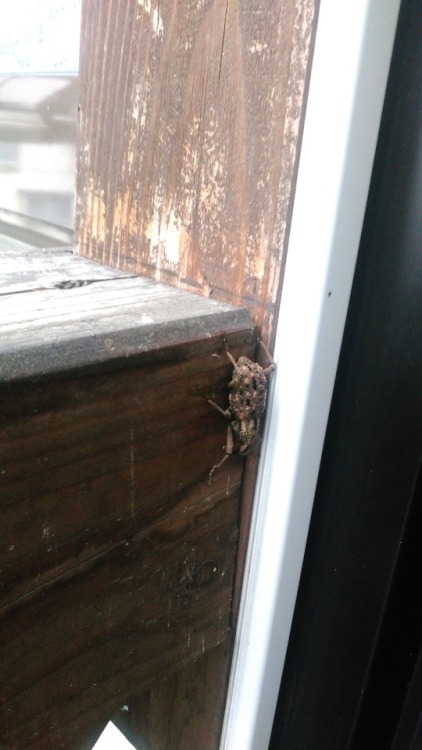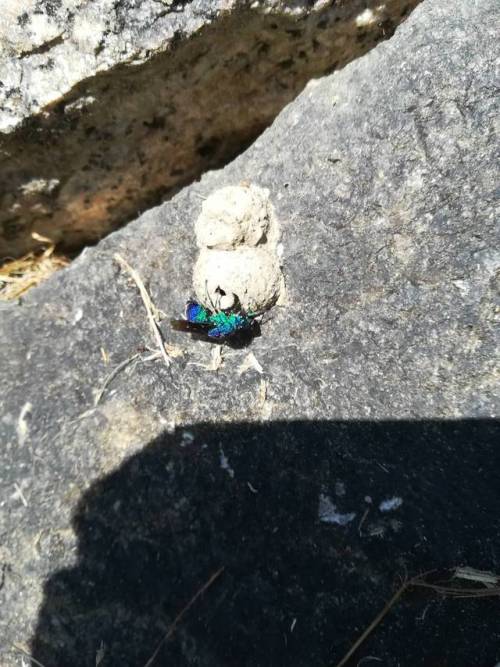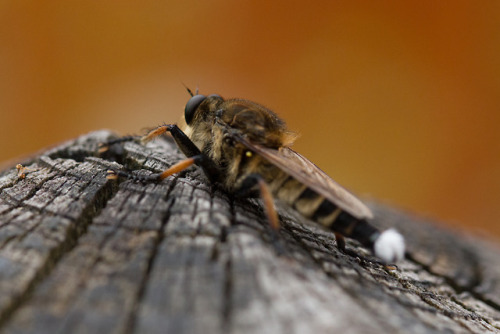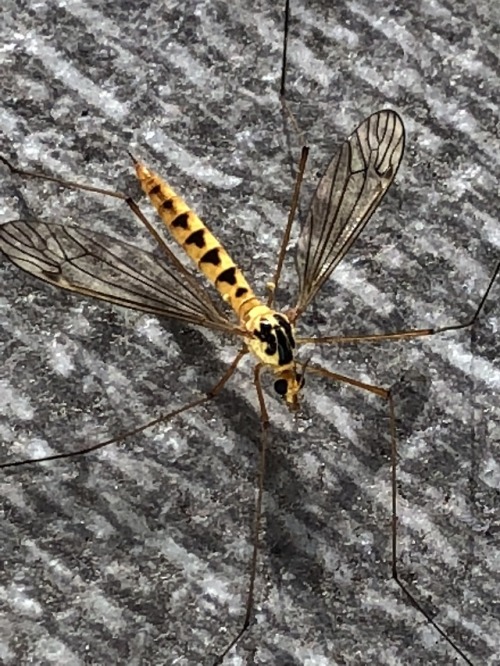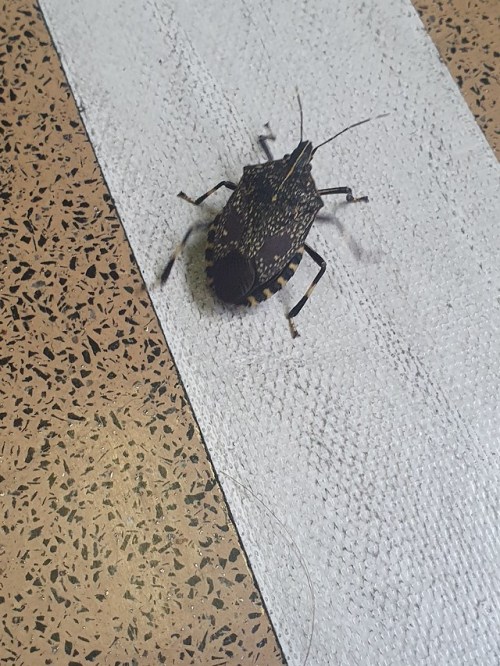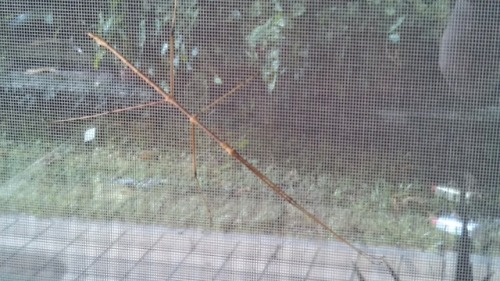#japanese insect
“I have been try so hard to figure out what this cute, fuzzy little guy is called..but I can’t find anything. Found him in Yokohama-shi!”
I am reasonably certain that your fuzzy flat caterpillar is a type of
Lappet Moth
that are often found on pine trees in Japan. They’re known as
カレハ蛾 “Kareha-ga"
moths in Japanese. I couldn’t find one with that particular coloration on the page of Lappet Moths, but the low carriage, wide stance, body shape, black tuft in front and large face all resemble that family as far as I can tell, so this is my best guess. Thanks again for your submission and have a great fall!
Comparison photos of Lappet Moths
Post link
Next to my front door today, what the heck is this guy? - @callmegallifreya
Hey! Thank you for your submission and sorry for the long wait.
At first glance I could see you have a Weevil of some type (ゾウムシ、”Zoumushi”, Elephant Bug), but it took some digging to find precisely which one. Japan has around 1000 species of weevils (!).
I always love when I stumble across something in the most roundabout way, like searching for “Black long horn beetle with yellow spots and white and black antenna that lives in Honshu” and it turns out to be called a “yellow spot Longhorn” or something. It always makes me facepalm because I should honestly remember people name insects with simplicity. Today I should have taken that lesson to heart because you have a
オオゾウムシ Oo-zoumushi, “Big Weevil”( Sipalinus gigas).
English name: Giant Weevil. it is the largest weevil in Japan!
Size: 12-34mm
Description: Like other weevils, its proboscis is long and curved downward, giving it the charming Japanese name of “Elephant Bug”. The entire exoskeleton is textured with bumps. A newly-emerged weevil has a fine brown powdery texture over its entire body like velvet, but this is eventually worn away, with older individuals showing more black ‘background color under the paint’, as it were. Bold black streaks along the mottled brown body distinguish this weevil from others with similar brown coloration.
Distribution: Indonesia, Philippines, China, Taiwan, Korea, Kyushu to Hokkaido.
Behavior: It is known to be drawn to lights at night, and can be found on fallen trees in forests where stag beetles also hang out. These weevils will play dead if harassed, and Japanese Wikipedia also notes they have sharp claws that cling tightly to surfaces such as trees or a human hand, and they are difficult to pull off of a surface. They will continue to cling to a tree so tightly you can pull their legs off before they’ll let go! :o
Weevils place their eggs in weak and dead trees and the larvae burrow inwards to feed on trees such as pines, chestnuts and elms. It is considered a pest in lumberyards because it prefers to lay its eggs in dead wood. (Well, it seems a very logical mistake to make, on the weevil’s part.)
Thanks again for your submission!
Post link
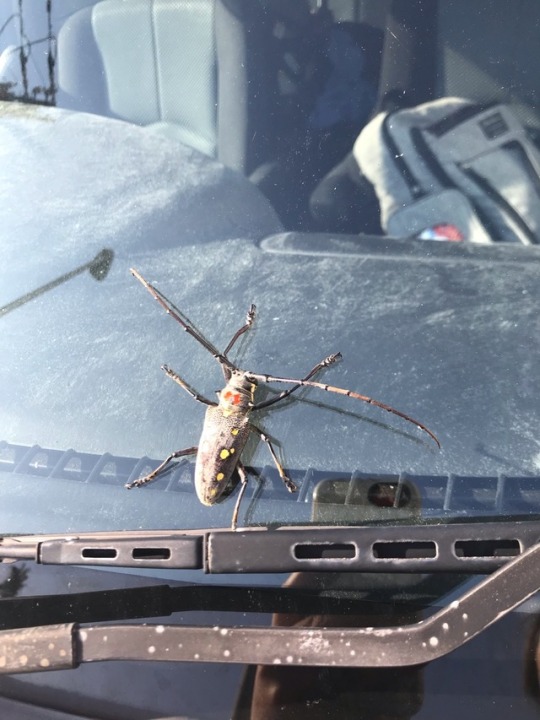
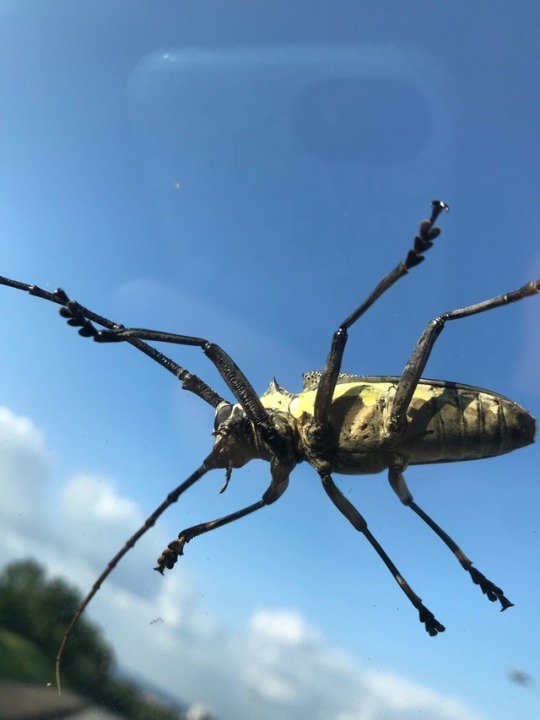
“Overall about the size of my palm. Picture taken in Okinawa if that helps identify.” – @jngirl2
Hello! Not only does it help, it was absolutely vitalin identifying this type of Longhorn Beetle. This particular Longhorn is ONLY found in Okinawa. It is a Fig Longhorn, Batocera rubus Linnaeus (”Ichijiku Kamikiri-Mushi”): See page here in Japanese.
This Longhorn deposits its eggs in fig and mulberry trees.
The larvae of the Longhorns bore into living trees (or untreated wood) and can be considered pests in some areas or ecosystems. It does not bite, sting or have poison, or have any other particular defense against humans. Some areas of the world have so much trouble with these beetles in trees that they are considered serious threats. However the Fig Longhorn does not appear in any lists of particularly vilified species.
Thank you for sending me this tropical beauty!
“We are new to Sasebo, Japan and were greeted by the front door of our unit in the tower we live in by this beauty butterfly earlier this summer. It must have known we love insects and was hopeful that we’d be able to help it find it’s way back outside to safety. We were able to get this very large and beautiful butterfly outside and were gifted with a couple pictures before it left. I think it’s a Papilio maackii, but don’t know for sure. Also can you tell from the photo if this one is male or female? Thanks so much!”
Thanks so much for submitting that awesome photo of the swallowtail butterfly you found in Kyushu. It’s an incredible individual, what a brilliant find.
I looked carefully at photos of Papilio maackii to compare, but it looks slightly different. maackii seems to always have a line of iridescent teal running along the lower edge of the hindwings with a stripe of black above and below it. Due to the absence of this line, I believe you’ve found a Papilio dehaani, with the slightly disappointing Japanese name of “Karasu-ageha”and the much more complementary English name of “Chinese Peacock Butterfly”.
Compare with this photo!
which has similar whitish brushing on the forewings, row of red spots on the hindwings, and clear delineation on the hindwings between the iridescent green/blue area and the deep black area where the red spots occur. Another reference:
This photo: Shows an identified male at a puddle.
Thus with reasonable confidence I will say you’ve got a very robust female Papilio dehaani! Many other examples I saw of this butterfly did not show such a full set of spots or such breadth of wing, but yours looks extremely healthy. She must have had a whole mikan tree to herself as a caterpillar!The red spots are present in the females, to a greater or total degree compared to the males, of many swallowtails, particularly in Japan.
- Special notes: Spring and summer generations produce different looking adults. There is both a spring form and a summer form for this butterfly.
Larval food
Rutaceae:
- Citrus depressa
- Citrus junos
- Citrus tachibana
- Euodia gabrifolia
- Euodia lepta
- Euodia meliaefolia
- Orixa japonica
- Phellodendron amurense
- Poncirus trifoliata
- Skimmia japonica
- Zanthoxylum ailanthoides
- Zanthoxylum nitidum
- Zanthoxylum piperitum
- Zanthoxylum schinifolium
I have been told that Kuro-ageha and Karasu-ageha are rare to find in Japan, even the caterpillars, although they feed on all citrus plants as swallowtails do. Thank you again for your great submission and feel free to ask if you find any other bugs!
Post link
“Saw this strange insect in Kyoto, going in and out of this nest structure. The colour struck me as very odd. I thought it was a weird bee or something at first, but upon closer inspection the head looks more fly-like. I was unable to identify it online, so I’m hoping someone else can!”
オオセイボウ(Stilbum cyanurum), Large Cuckoo Wasp
Hello!
Thanks so much for your submission. I hadn’t seen that handsome blue insect before, but your very helpful shot of its nest was enough to convince me I was looking at a wasp of some sort. So your first thought was absolutely right. I was able to ID it fairly certainly asStilbum cyanurum,https://en.wikipedia.org/wiki/Stilbum_cyanurum or in Japanese, オオセイボウ.(Ooseibou).
Comparison photos here:https://s2014no64.at.webry.info/201109/article_16.html
Distribution: Honshu, Shikoku, Kyushu, Okinawa
Size: 12 - 20 mm
It is indeed a type of Cuckoo Wasp. They have a stinger, but Cuckoo Wasps are not normally known to sting except in the most dire self-defense. Indeed, the photos on the blog above show someone handling it quite calmly. They’re widespread even across Europe, and though the adults feed on nectar like normal wasps, they capture and paralyze prey insects on which to lay their eggs in the nests. The larvae hatch out onto a ready meal.
Wonderful find and thank you for the submission!
Post link
@derberner “Saw this insect at Fushimi Inari Taisha in early August. It was nearly the size of the large dragonfly it chased off. I’m curious as to what it is!”
Hello!
Thanks for the cool submission! This is a type of Robber Fly or Assassin Fly, specifically a very distinctive Promachus yesonicus called “Shioya Abu”, meaning “Salt merchant Horsefly”.
This fly is not a proper horsefly (and doesn’t attack humans or other large mammals) but snatches prey insects out of the air, just as a dragonfly does, and is an incredibly efficient hunter.
I wouldn’t be surprised if it was either making a grab for the dragonfly (which decided to make a break for it) or was chasing the dragonfly away from the sweet hunting spot and claiming a nice vantage point.
Thanks again, have a good weekend!
Post link
“Hi everyone, I love and am very interested in insects, especially east asian ones. sadly I have no clue about any of them.
All these photos I took in Japan would love to know what exactly they are.
I have tried to search for insect identification websites (found but nothing comes up when I simply search for “cicada” for example) or a kind of lexica with photos of them all to identify them. no such luck. but i found this here fine website and hope you can help me.
most of them were shot in the island of kyushu, northern region of the island in fukuoka prefecture. some the shield bug is from iwakuni in yamaguchi prefecture
Thank you very much”
Hello, thank you for the very big submission! I’ll work on these as well as I can.
The cicada (Far Right) appears to be a Niiniizemi, Kempfer cicada, Platypleura kaempferi.
The green grasshopper is some close relative of the Atractomorpha genus, possibly Atractomorpha lata (オンブバッタ Onbubata).
The green and gray spider appears to be a male Neoscona scylloides , Comparison photo here.
The slim golden wasp looks much like a “Hosoashinaga-bachi” (Slim long-legged wasp) or Parapolybia indica.
The caterpillar might be a species of Cabbage Looper, but I’ll have to dig a little deeper in the world of caterpillars to find it for sure.
I suspect the shield bug is actually a nymph, but haven’t found a match yet.
The large grasshopper appears to be a type of locust, again they are tricky to ID!
I’ll have to ask around about the beetle too, but it’s very cute.
Thanks so much for the submission!
Post link
“Hi there! Was wondering if you can help indemnify this insect. It’s quite big. About 4-5 cm. Thank you!”
Hello! Thanks for the great submission. The close-up clear photo gives me a lot of help, especially looking at the end of the abdomen and the veins of the wings, which are often the only differences between some insect species.
This is a big female (and completely harmless and nonvenomous) Crane Fly, which kind of look like a Mayfly (or a giant mosquito) but lack the long filament “tails” at the end of their abdomen.
Crane Flies are present around the world and there are many subspecies, and in Japan they’re generally called ガガンボ (Gaganbo).
I am not certain about the exact species you’ve photographed, but don’t worry as they’re all totally safe (although slightly alarming)!
Thanks again and message me anytime with ID requests and I’ll do my best.

Post link
“Found in a Tokyo school. My students were keen to identify it.”
Good evening!
Thanks for your submission to Bugs of Japan.
The bug you sent is clearly a Stink Bug (kamemushi), but there are several varieties in Japan and they are all a little bit different. Kame-mushi are a little bit special when we say “bugs” because they are actually True Bugs (hemiptera), which also includes cicadas, aphids and bedbugs, and a distinguishing feature is that they have piercing/sucking mouthparts (like a straw) in both their baby (nymph) and adult forms.
The particular Stink Bug you’ve sent appears to be a “Kimadara Kamemushi” (see comparison photos here https://ameblo.jp/murmecophaga/entry-12618123641.html ), Erthesina fullo. (English name: yellow-spotted stink bug or yellow marmorated stink bug.)
They are found in East and Southeast Asia and eat plant juices!
Thanks for your submission and have a good summer!
Post link
“Found this cluster of insects. They were on top of what looked like a patch of silver eggs. I’m in Okinawa and they were on my patio closet door. “-CW
Good morning! Sorry for the delay, I haven’t been keeping up with this blog very often.
My best guess is - you have stink bugs! (カメムシ, Kamemushi) Their name is more respectful in Japanese- “Turtle bug”.
Most stink bugs feed on the juices of plants, though some species eat other insects, such as caterpillars. The adults are commonly seen in cities during the late summer, and are slow-moving, but will release a bitter smell if handled or damaged– however they do not bite people or pets.
Comparison photo on this blog: http://tokada.blog.fc2.com/blog-entry-4049.html
Post link
Hi - could you help me identify this caterpillar? It was on my lime tree. I’m in Yamaguchi-ken.

Hello!
Thanks for your submission!
You’ve found my all-time favorite bug of Japan and the one on my header image, a Papilio xuthus , Chinese Yellow Swallowtail (called “Ageha” or “Nami-ageha”).
You can see other posts I’ve made about these iconic and beautiful butterflies on my blog here: https://bugsofjapan.tumblr.com/tagged/papilio_xuthus
This particular caterpillar is going to be a pupa within 5-10 days depending on the weather temperature. It’s nearly impossible to tell the sex of a caterpillar, but I had a system I was working on when raising these, judging by the shape of the abdomen when they were fully grown as caterpillars before they became a chrysalis– however yours is not very far into his fifth “instar” (shed skin stage as a larva) judging by the size of his face (large) to his body (kind of small and wrinkly). He will get QUITE a bit bigger, probably as big as your pinky finger before becoming a chrysalis!
The caterpillars of Papilio xuthus can ONLY feed on plants in the citrus family (including Rue), but Japan is chock-full of citrus trees so they are commonly seen in suburban areas. They will eat a LOT of leaves at this stage, but they are a caterpillar for only 5-10 more days before becoming a butterfly, and then going on to be a wonderful pollinator in the neighborhood. Your caterpillar, if he grows up, will live as a butterfly all the way until the first frost when he will freeze and die. However, any of his children that have become a pupa will stay as a pupa over winter, even in freezing temperatures, and emerge in the spring time as the first ‘flight’ of Ageha in April.
Hello, I found this bug flying around near Osaka. I really want to know what it is, I’m guessing it’s some species of bumblebee?? It looks like a fuzzy yellow flying shrimp. Thanks in advance!
“Hello, I came across this tumblr, and would like some help identifying this particular bug.
Just some background information: I currently sell drinks out here in West Tokyo (Tachikawa), and generally work with a lot of sugar. My shop is also brightly lit, with neon lights and lots of LEDs. Some weeks ago, I’ve spotted a few of these bugs hanging around my neon lights and LEDs. Although it was fine at the start, starting last week there were more and more of them flying around, so I checked around and discovered a whole cluster of them hidden a section in my shop between the ceiling and a partition where I’ve got a strip of LEDs, and hosed down the whole area with some bug spray. However, it didn’t even take a day for a few of them to start flying around again. I plan to call an exterminator to deal with this, but I would also like to know just what bug is this so I could read up on it.
It’s got a long black body, with hairy feelers, long legs, flies, and is usually found near or perched on light sources.”
Hello! Thanks for the submission! With the help of the bug experts on Reddit, they believe your insect is a Non-Biting Midge. As the name implies, they look a bit like mosquitoes but do not bite, are attracted to lights, and are seasonal. Mostly they are a nuisance. Here’s a useful PDF about their behavior: https://www.pub.gov.sg/Documents/Midge%20webpage%20guide%20PDF.pdf
Non-Biting Midge
Unfortunately, it seems that pesticides offer only temporary control of the adults as these are water-breeding insects (and delicious members of the food chain), but the good news is that they don’t last long, and the swarms will disperse without causing damage to people or property. I hope they aren’t causing too much trouble for you and your shop! Thanks again for your submission and have a good spring :)Post link

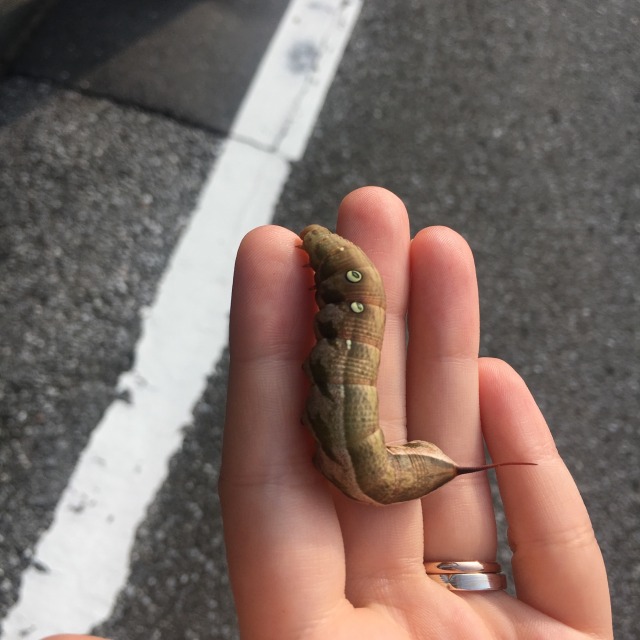

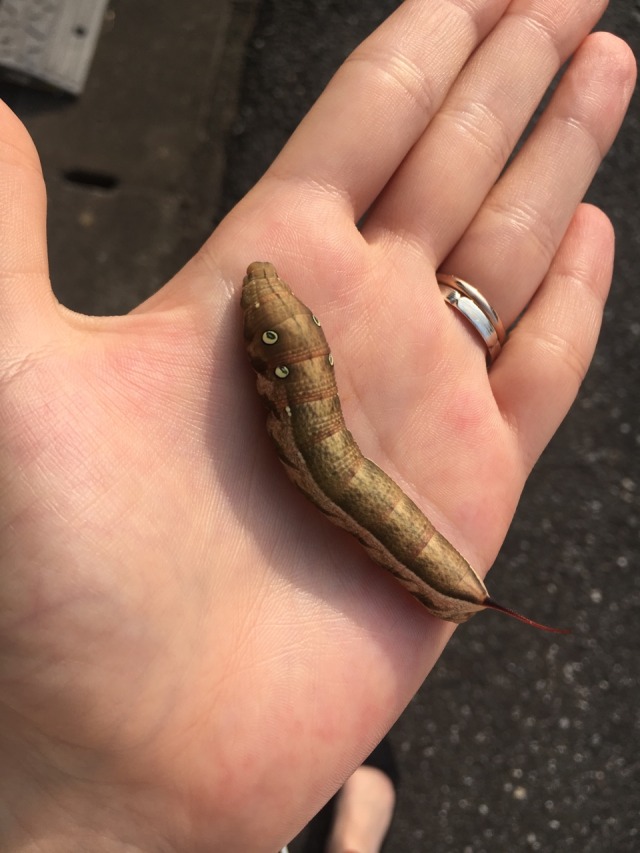
“Hello which caterpillar is this exactly?
I guess some sort of hawk moth?
Location was Chiba prefecture
ありがとうございます!”
Hello! Thanks for the submission! You’ve found one of the relatively common
Theretra japonica
which is a kind of hawk moth/Sphingidae or Sphinx Moth. They leave the bushes they grew up on to wander and find a place to pupate in soft soil, but in the cities that usually means they wander onto concrete sidewalks and lose their way. If you find one wandering like this, you can take it home and pop it in a flowerpot of potting soil and it will probably dig down and pupate, emerging a while later as a lovely striped moth.
“We are in Okinawa, Japan. My kids found this guy hanging out on our screen door. We figured out it is some kind of stick insect, but that is about all we have been able to determine. We’ve never seen one of these before, and my kids are intrigued. Can you give us any more information? Thank you!
The O. Family”
Thank you for the awesome photo of your stick insect in Okinawa. Okinawa is delightful for wildlife because like Hawaii to the American mainland, you get a whole ecosystem of bugs, birds, snakes, plants etc. that don’t occur on mainland Japan. I am not very familiar with them, but luckily you sent me one that’s pretty easy to identify!
The stick insect in Japan is called “Nanafushi”, and there aren’t many of them in Japan at all. This encyclopedia page suggests there are only four, and I think yours is just a regular old “Nanafushi” stick insect of Okinawa,
Entoria okinawaensis ( オキナワナナフシ)
Like all insects, the stick insect has 6 legs, but yours is resting with the front two legs held straight out in front of its head to perfect its stick pose. This page about insects says that in Okinawan traditional culture, the stick insects are a sort of “horse” for the gods to ride and called ソーローンマー (So-ro-nma-).
I’ve never seen a live stick insect so I’m very envious! Thanks again for your submission and have a great fall.
Post link


